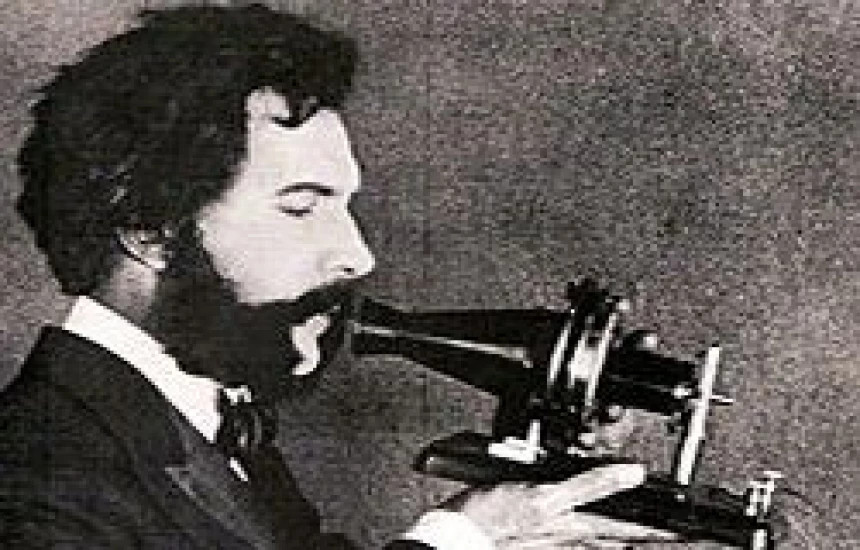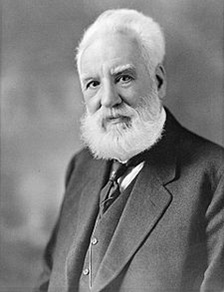
Nowadays, the use of mobile phones, internet communication and the extension of communication to multimedia (voice, mail, video and chat) are commonplace. However, many years of development and several discoveries have preceded this level.
Nowadays, the use of mobile phones, internet communication and the extension of communication to multimedia (voice, mail, video and chat) are commonplace. However, many years of development and several discoveries have preceded this level. This article will try to introduce you to what all preceded to reach today's state.
The transmission of information over longer distances has existed in ancient history. The most common forms of information transmission were the use of messengers, who used running, carriages or riding horses or other animals to increase the speed of message delivery. There is a well-known story of a runner in ancient Greece who brought news of victory at the Battle of Marathon and died after completing the task. Other forms of information transmission were the technology of smoke and fire signals. These methods were charged to the level of technical sophistication of human society at the time.
 These forms were continuously improved, but their further development could only occur after the invention of electric current, its effects and the possibility of its transmission over wires. The precursor of telephone transmission was the telegraph. In 1832, after studying painting in Europe, a man whose name is associated with the term electromagnetic telegraph. The man's name was Samuel F. B. Morse. He was returning home on the mail boat "Sully" when he received the sad news of the death of his first wife. The news had been going to him for 14 days. This event and conversations with a passenger about new electromagnetic discoveries in Europe inspired his first notes on the "Recording Electromagnetic Telegraph" and the code of lines and dots for each character of the alphabet. A year later, he was demonstrating his first device for transmitting signals by wire. He flips a switch on one end and marks a paper tape on the other. However, it was not until 1836 that he constructed his first working telegraph, which is now an exhibit in the National Museum in Washington. The design of the device was based on the available options and from a contemporary perspective it looks almost comical. The apparatus consists of an old picture frame attached to a table. He also used wheels from an old wooden clock, which were driven by weights and moved a narrow strip of paper. The telegraph was gradually perfected as technology progressed, changing its forms to teletype, fax and text file transmission. The current highlight is high-speed data communication over an internet network.
These forms were continuously improved, but their further development could only occur after the invention of electric current, its effects and the possibility of its transmission over wires. The precursor of telephone transmission was the telegraph. In 1832, after studying painting in Europe, a man whose name is associated with the term electromagnetic telegraph. The man's name was Samuel F. B. Morse. He was returning home on the mail boat "Sully" when he received the sad news of the death of his first wife. The news had been going to him for 14 days. This event and conversations with a passenger about new electromagnetic discoveries in Europe inspired his first notes on the "Recording Electromagnetic Telegraph" and the code of lines and dots for each character of the alphabet. A year later, he was demonstrating his first device for transmitting signals by wire. He flips a switch on one end and marks a paper tape on the other. However, it was not until 1836 that he constructed his first working telegraph, which is now an exhibit in the National Museum in Washington. The design of the device was based on the available options and from a contemporary perspective it looks almost comical. The apparatus consists of an old picture frame attached to a table. He also used wheels from an old wooden clock, which were driven by weights and moved a narrow strip of paper. The telegraph was gradually perfected as technology progressed, changing its forms to teletype, fax and text file transmission. The current highlight is high-speed data communication over an internet network.
 One of Algotech's specialties is phone. The discovery and practical use of telephone transmission follows the discovery of the telegraph. The invention of the telephone is credited to two discoverers. On 14 February 1876 independently entered by an American Elisha Gray and from Scotland Coming from physiologist Alexander Graham Bell its patents at phone. A.G. Bell did not originally intend to invent the telephone for voice transmission, but his intention was to increase the efficiency of telegraphic transmission by simultaneously transmitting multiple telegraphic messages. The two inventions differed slightly in the design of the microphone and the handset. However, their functionality was identical. The patent was received by Bell on March 7, 1876. At that time, the device did not yet allow for voice transmission. The first voice transmission was made by Bell on 10 March 1876, when his colleague Watson heard memorable words from the device: "Mr. Watson, come here. I need you."
One of Algotech's specialties is phone. The discovery and practical use of telephone transmission follows the discovery of the telegraph. The invention of the telephone is credited to two discoverers. On 14 February 1876 independently entered by an American Elisha Gray and from Scotland Coming from physiologist Alexander Graham Bell its patents at phone. A.G. Bell did not originally intend to invent the telephone for voice transmission, but his intention was to increase the efficiency of telegraphic transmission by simultaneously transmitting multiple telegraphic messages. The two inventions differed slightly in the design of the microphone and the handset. However, their functionality was identical. The patent was received by Bell on March 7, 1876. At that time, the device did not yet allow for voice transmission. The first voice transmission was made by Bell on 10 March 1876, when his colleague Watson heard memorable words from the device: "Mr. Watson, come here. I need you."

introduced his telephone on June 25, 1876, at the Centennial Exposition in Philadephia. The telephone became the featured exhibit at the exhibition held on the 100th anniversary of the signing of the Declaration of Independence. Other significant dates in the extension of the telephone into practical use are:
Some more interesting information about Alexander Graham Bell. He also worked in other technical fields. In 1891, he tested model helicopters. Later, he tested kites - he wanted to build a kite capable of carrying a man, and was instrumental in the design of the first airplanes. He also designed hydrofoils. In 1918 he built the fastest warship at the time, reaching speeds of almost 115 km/h. Bell came up with the concept of transmitting sound using optical waves. For his discoveries, Bell received 18 patents and held 12 more. The unit of sound power, the bel/decibel (dB), was named in his honour. The world-famous Bell Laboratories (at the time of its founding under the name Bell Telephone Laboratories) bear his name. He died in 1922 at the age of 75 in Canada.
In order to develop the mass diffusion of the telephone, it was necessary to start the industrial production of the telephone apparatus and to develop other components of the telephone network to connect individual telephone subscribers, which are telephone exchanges. The following article will focus on this stage.




Copyright © 2026 - Algotech a.s., all rights reserved
| Personal data processing |
Terms and conditions